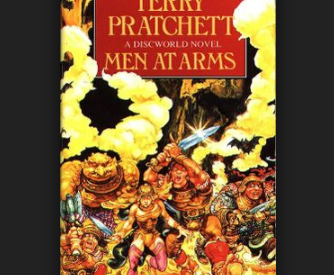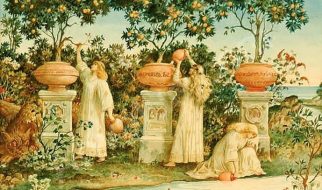Unlike the coward Tom Chivers I rank all the Discworld novels
Update: While you?re here, why not read my analysis of the themes and eras of the discworld.
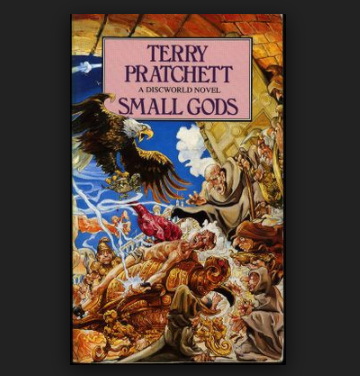
1. Small Gods
Perhaps my favourite book. Period. Small Gods is always the book I recommend to people as their first foray into the Discworld. It?s a meditation on religion, personal morality, the dangers and prospects of progress, faith and good deeds. It?s also very funny. Terry Pratchett?s anticlericism is a running theme in Discworld, but this book manages to be humane towards religion and utterly scathing at the same time. It is also incredibly complete despite not relying on any of the characters Pratchett had spent the previous 12 books building up.
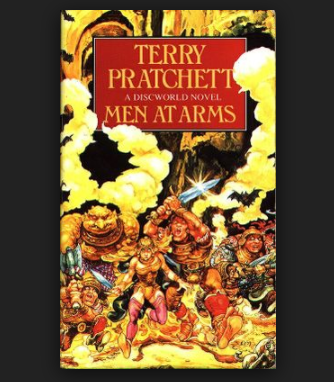
2. Men at Arms
You will see that I have a lot of time for the Ankh-Morpork City Watch, Men At Arms is where they reach their peak. This is the book which sees Sam Vimes matures as a character, giving us the Boots theory of socio-economic unfairness as well as facing a wonderfully mad and devious antagonist. It is also about the whole watch, unlike just Sam Vimes, as the later books tended towards. There?s too many highlights, but they include: the book also features to socio-economic theory of unfairness, Gaspode the wonderdog, whether you want an evil man or good man to point a gonne at you and Vetinari manipulating the city?s residents and guilds to keep the whole thing ticking.
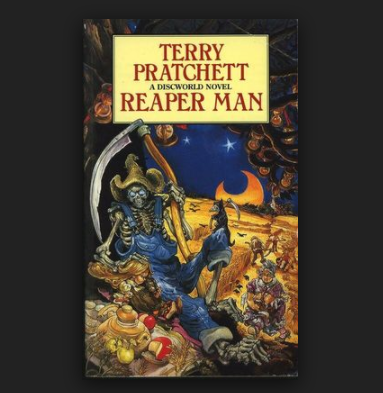
3. Reaper Man
Death is retired after becoming too attached to the humans and things go haywire. Although it relies on a similar conceit Mort this one is even better. The development of Bill Door and Miss Flitworth?s relationship is touching, as his Death?s whole relationship with the villagers. As well as a fantastic if actually kinda parochial storyline for Death, there?s also Wizards running around Ankh-Morpork fighting and fooling around trying to destroy the embodiment of consumerism. Plus we get the Death of Rats.

4. Wyrd Sisters
As with Men at Arms and Reaper Man this is the second in a series. From Wyrd Sisters to Men At Arms the Discworld enters its real golden age. Equal Rites? introduction of Esmerelda Weatherwax is probably the most important thing to happen in the Discworld series, alongside Sam Vimes she is the most important cipher for lessons on life and morality in the series. Because as well as being funny what sets Discworld apart is it is an incredibly moral series. Drawing on King Lear, Macbeth and Hamlet Wyrd Sisters is also very literary and shows the same joy of literature and language which is a hallmark of Discworld books. Introducing great female characters like Nanny Ogg and Magrat Garlick also shows how far the series had come from its earlier fantasy pastiche.
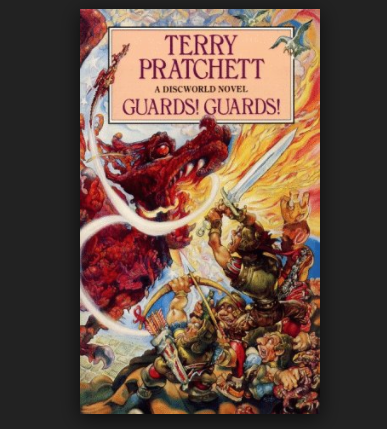
5. Guards! Guards!
In Guards! Guards! we meet the Ankh-Morpork City Watch and what a state it is in. Sam Vimes is an alcoholic, Nobby is a criminal, and Colon is counting down to retirement. And Corporal Carrot is a 6 foot 6 dwarf. It lacks the more developed dynamics of the watch and city but it is so well paced, the action is brilliant and again, its very, very funny. Dragons farting, I mean, come on! This is great stuff.
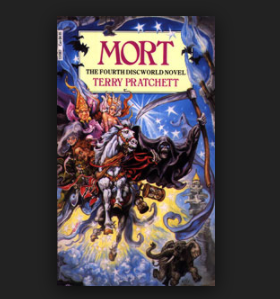
6. Mort
Aside from Sam Vimes and Esme Weatherwax, Death is a pivotal character, he appears in essentially every book. Mort is brought on as Death?s assistant and fucks everything up, including falling in love with a princess and Death?s daughter and changing history. The humanisation of Death is one of Terry Pratchett?s best ideas, Death doesn?t always get it right and in that lies the comedy.
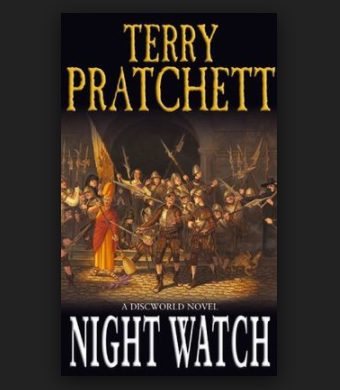
7. Night Watch
The first three books are all Whodunnits set in Ankh-Morpork and the next two take the City Watch outside the city, Night Watch does both. Travelling back in time to when Sam Vimes first joins the force. This is the first of three books (Night Watch, Thud!, Snuff) which are more Sam Vimes Books instead of City Watch Books, it represents the second peaking of the watch series. Grandfather paradoxes and origin stories galore mean this is a great book for a Discworld fan. Plus Carcer makes for a really well drawn and horrible villain.
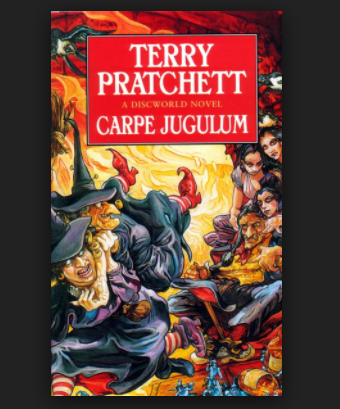
8. Carpe Jugulum
For some reason I?ve always loved Carpe Jugulum. It is the last Witches book, before Tiffany Aching becomes the focus on the series. Granny Weatherwax faces her hardest challenge yet and overcomes it through the medium of tea. For me it surpasses Witches Abroad, Lords and Ladies and Maskerade because the villains are so much more interesting. The social dynamic of the Magpyr Vampire family and their confrontation with modernity is a fantastic theme continued in later Discworld books.
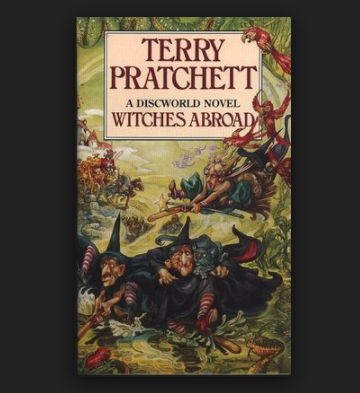
9. Witches Abroad
Often setting things in a new location is a sign of a writer running out of idea, luckily this is not the case for Witches Abroad. Pratchett?s love of narrative and story are again central to the plot, and fairytales inform the main elements of the plot. Much of the comic elements come from the Abroad bit; sending up foreigners and their funny ways, but mostly Brits and their abysmal habits abroad. This also sees Esme Weatherwax?s growth as a formidable and good (but not nice) witch, just as Nanny Ogg stays exactly the same, being the source for many jokes on national stereotypes, not least on Brits abroad.
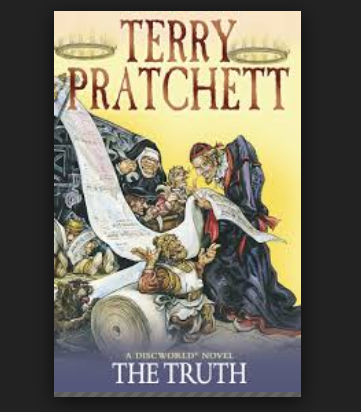
10. The Truth
Perhaps this was never intentional, but from Guards! Guards! something like The Truth (not to mention Raising Steam) was inevitable. The Truth is where you see modernity start to slipinto the Discworld. I?m a big New Institutional Economics fan, for all its faults, and Vetinari?s rule meets lots of the conditions which should support economic development. Vetinari is a despot, but he?s not despotic (apart from towards mimes) and he?s inclusive, elites in the city have an interest in it working via the guilds, crime is organised, and Drawfs, Trolls, Werewolfs and the rest can all make a home (and money) in Ankh-Morpork. So a book about the development of free press just adds to this milieu of early modern city life. Journalism is ripe for satire and this does that brilliantly too. For me The Truth represents the start of the second golden age for Discworld books, in place of the repetition of Soul Music or Feet of Clay you get some real innovation. The Truth, The Amazing Maurice and his Educated Rodents, Night Watch, The Wee Free Men, A Hat Full of Sky, Going Postal all represent new departures and new ideas for the Discworld.

11. Going Postal
Another book in the mould of Ankh-Morpork?s slow ooze into the modern age sees the recreation of the post office, and the introduction of a new character. Moist von Lipwig is a loveable chancer who, like many Pratchett characters, only comes to heroism reluctantly.
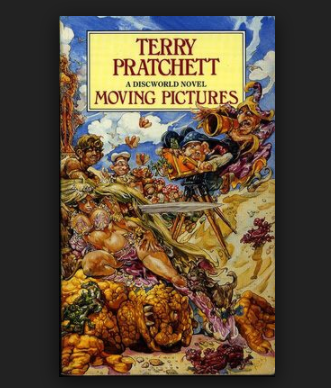
12. Moving Pictures
The first of the ?industrial revolution? books looks at the movie industry. Hollywood, or Holywood, is an obvious target for a satire, but perhaps not for a fantasy author. But making the magic of Hollywood really magic. Detritus, Gaspode and a man so lazy he keeps himself in incredibly good shape are all comic masterstrokes, but the novel?s climax is a bit anti-climactic.

13. Lords and Ladies
Elves are the only species who seem basically irredeemable on the Discworld, even Orcs get a fair crack of the whip but Elves are vindictive bastards. I think this is Sir Terry evening up the fantasy score, he always loved an underdog, and I think he correctly surmises that anyone magical, beautiful, immortal is bound to be a dickhead. Magret shoots one in the eye through a keyhole, which is a good a piece of character development exposition I?ve ever read. And the Ogg clan get a good showing with Morris Dancers and Shawn Ogg both playing key roles for the story and the comedy.
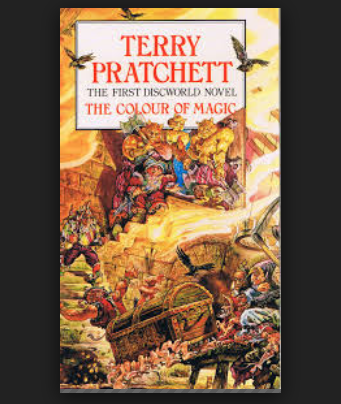
14. The Colour of Magic
Technically one of the weaker Discworld novels, but also the font and matrix of all that came afterwards. Plotting on The Colour of Magic is weak as Rincewind, Twoflower and the Luggage all move from one fantasy trope to another, running away from each in turn. But there?s still so much joy in reading this first book I can?t rate it any lower. While the Discworld developed enormously from this humble beginning a lot of it was already in place from this first book.

15. Equal Rites
The first post-Rincewind book introduces a decent female character, something sorely missing from the first two books. As in the Colour of Magic some of the world building is out of kilter with later books, the final fight between Esme and the Archchancellor especially. But the interaction between a grumpy witch and a precocious child are great.

16. Sourcery
Sourcery is the bridge between the early world building era of fantasy parodies (The Colour of Magic, The Light Fantastic, Equal Rites, Mort and Sorcery), and the golden age of later books (Wyrd Sisters until Men at Arms). Everything is still in flux but you can see the beginnings of the ?modern? Discworld developing. Rincewind?s third adventure is one where he gets some decent character development instead of just being an itinerant coward. Likewise, wizardry and Ankh-Morpork take firmer shape as something which can inspire further books. For all these reason I think Sorcery holds up far better than many people give it credit for.
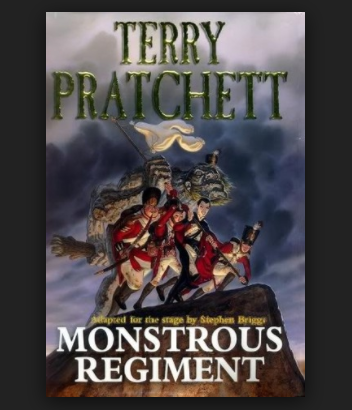
17. Monstrous Regiment
The most unsubtle of Terry Pratchett?s parodies, and for that reason I love it. SPOILER ALERT Everyone is a woman. Everyone. It?s like being hit in the face with a wet fish while someone yells ?isn?t sexism silly?!? Pratchett does some great female characters and gender dynamics in other books, but this one really lays it on thick. It is therefore very funny, in a Dom Joly/Stewart Lee repetitive way I like, but which others find a bit much.
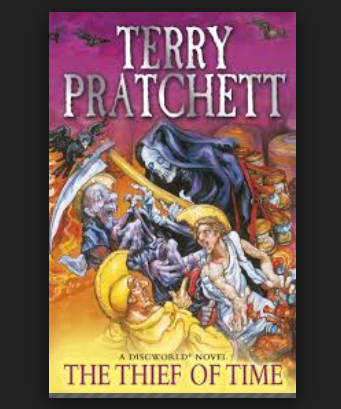
18. Thief of Time
Death, once again, is up against the Auditors of Reality. His granddaughter is involved to. And the Death of Rats. All great characters up against a vaguely autistic clockmaker and an auditor slowly losing ?her? mind. The slow destruction of beings of pure reason by simple human experiences is funny and interesting. And the listening monks get a proper go. But the set up is much better than the conclusion. Sadly one of the problems of writing books without knowing where they?re going.
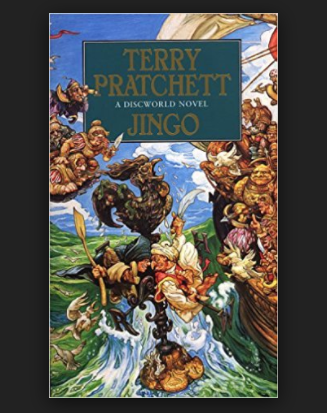
19. Jingo
The City Watch leave Ankh-Morpork to try to stop a war. Pratchett is a good liberal and the anti-Jingoism and general frustration at the idiocy of war shines through. The dual story common to most Discworld books works well with Sam Vimes off trying to solve a crime while Nobby, Colon, Vetinari and Leonardo da Quirm sneak around in a submarine. Vimes Klatchian opposite number is a fantastic foil for his little Ankh-Morpork failings.

20. The Fifth Elephant
The City Watch leave Ankh-Morpork, again, but to stop a civil war, this time. However, there is a lot to differentiate this book from Jingo. The picture of Uberwald society it paints is a big addition to the Discworld universe, the relationship between humans, werewolves, vampires and dwarfs give much more depth to social relations than most fantasy writers bother with. It also works great as a whodunnit.

21. Soul Music
Death disappears. Again. For me this is part of the Discworld?s difficult third age. What to do when you?ve already used your main plot twice? Sadly for Soul Music, you do it again. From Soul Music through to The Fifth Elephant you get some great stories and additions to Discworld lore, but the plotting doesn?t really get innovative again until The Truth. For Soul Music, the death of Mort and Ysabel at the outset is a great bit of difficult writing, but that can?t redeem the fact that death going away and everything going haywire has been done before, and better, in Reaper Man. That said, Death is still a fantastic character and just his working as cook in a caf, for example, is funny.
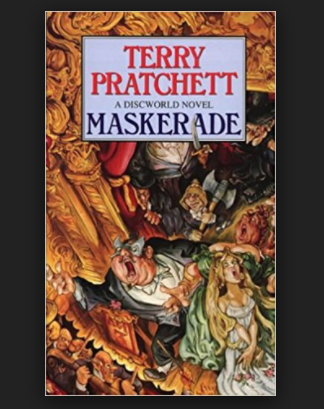
22. Maskerade
The weakest Witches Book which means it is still a very good book. Agnes Nitt goes to Ankh-Morpork to become an opera singer. Despite not knowing the Phantom of the Opera or anything about Opera I am assuming this is a good satire of the lunacy and overthetopness of it all. Witches are, of course, never fish out of water, they are always exactly where they should be, so seeing Agnes, Nanny and Granny all out of place in Ankh-Morpork lends itself to lots of great jokes. The murder mystery plot also tacks along nicely.

23. Hogfather
I read Hogfather soon after it came out, which meant I was about 11 or 12 and frankly I had no idea what was going on then, and it?s coloured my enjoyment of this book ever since. Having now read it as a 30 year old (for the third time) I get it, and its good, but for an 11 year old Pratchett?s habit of assuming you?ll get what is going on without it being explicit is confusing. This time it?s not death that?s gone missing, it?s the Hogfather, who brings good boys and girls sausages and naughty ones bags of bones. The villain Mr Teatime (pronounced Teh-ah-tim-eh) is brilliant in the classic Pratchett mould of someone too sane. He is similar to Mr Pin in The Truth but smarter and crueller.

24. Pyramids
One of the earlier books and filled with excellent moments. Rather than parodying fantasy it?s a pastiche of ancient Egypt. Like Small Gods its focus is on belief and its power, but unlike Small Gods this is moulded with one of Pratchett?s other loves, science. While the magic of Sorcery was wild and boundless, in Pyramids the management and problems of magic are discussed like physics, including multi-dimensional rips and folds. In Pyramids you can see Pratchett realising he really can write about more or less what he likes.
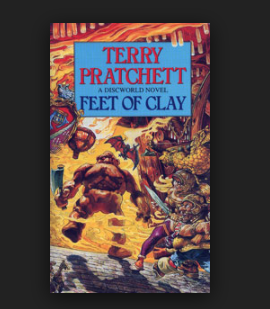
25. Feet of Clay
For the third time, someone is out to get Vetinari and return to Ankh-Morpork its king, this time Nobby Nobbs. What bothers me with this, in the grand scheme of the series, is that by Feet of Clay the city hasn?t changed a huge amount and Vetinari?s rule hasn?t had much material effect. Still, because people are old fashioned they risk everything to have him killed. However, by the time of Raising Steam Ankh-Morpork is seeing a full scale industrial revolution, Thud!?s devices offer limitless energy, Making Money and Going Postal bring large scale financial engineering to the Disc, and people stop trying to kill Vetinari. Despite this failing, which I admit is slightly too well thought through, the machinations of the city are very interesting and the development of characters like Angua, Detritus and Cherry all add richness of the watch, but don?t save the book for me.

26. Interesting Times
Cohen?s Silver Horde take over the Agatean Empire through guile, cunning and violence. I think Pratchett is on weaker ground sending up cultures he doesn?t know (or industries, compare Moving Pictures to The Truth), so this lacks the punch of Jingo or Monstrous Regiment as a send up of tyrannical overreach. Its still enormously enjoyable to read, and you can?t help rooting for Cohen and the Horde, but on rereading I can?t help noticing how reliant Rincewind?s books are on characters other than Rincewind.
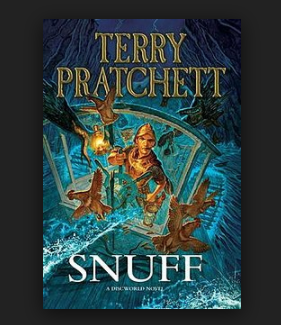
27. Snuff
At this point Terry Pratchett?s Alzheimer?s had been diagnosed and was affecting his ability to write alone. This is evident as the book is much longer than other Discworld books. As every writer knows its much harder to write something short, than long. There?s lots to like in the book; from the introduction of Constable Sweeney to the Goblins themselves. But there?s also lots to dislike; the local magistrates seem cartoonish, Wilikins is unrecognisable from Jingo and just a little too unbelievable. Still, I?m glad Terry and Sam got to have one last holiday together.

28. Raising Steam
Another of the later Discworld books. The weaker writing is rescued by the brilliant idea. What if Ned Simnel?s combine harvester had worked? What if the Discworld had mechanical power as well as magical? Seeing the financing and construction and socio-economic impact of railways played out was brilliant. By this stage the Discworld is still in its multi-novel subplot of dwarfish religious extremists opposing progress and geopolitical upheaval. That this subplot can carry on across such a lot of books is testament to the solidity of what was once just a disc on the back of some elephants on a turtle. But that means the moral and political messaging is less subtle than it once was, much like the writing.

29. The Last Hero
Is this a novel? A graphic novel? An illustrated novel? Who cares. It?s the culmination of Rincewind?s story and he is joined by Leonard of Quirm, Captain Carrot and the Librarian in trying to prevent the destruction of the world. The illustrations are great but the story is relatively linear compared to other discworld books. Cohen and the Silver Horde?s plan to return fire to the gods is a great conceit for a book but it lacks a certain something.

30. The Wee Free Men (Tiffany Aching)
Tiffany Aching is a fantastic addition to the Discworld. With a five part young adult series to convey people into the Discworld family there is now a real cradle to grave service. It ranks lowly because, frankly, it is a young adult fiction book, and I am not a young adult. Still, the book builds on the Witches series brilliantly and Tiffany, the Nac Mac Feegle, Elves and the Chalk all interact brilliantly to create a compelling story. As with other young adult fiction its too reliant on a singular hero for me, but then a 30 year old man is not a young girl.
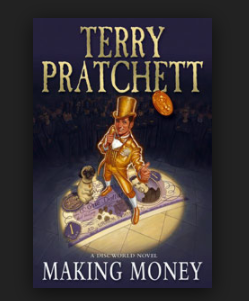
31. Making Money
The second Moist von Lipwig novel. Ankh-Morpork?s continuing development gathers pace with the introduction of modern banking. Unlike Going Postal the plot doesn?t drive forward in the same way. Its publication just as the world economy fell over makes it very timely, and indeed, there is something magical about money. Fiat currency, its weird. But the characters are less three dimensional and the dialogue is less snappy. Its part of the decline of the Discworld, but its still entertaining.
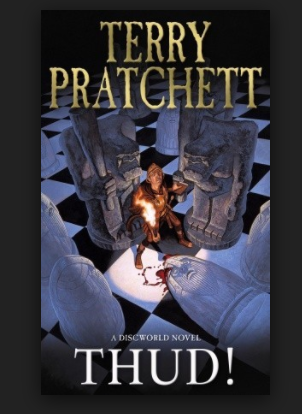
32. Thud!
For me Thud! is the starting point of decline for later Discworld books. Vimes becomes to heroic, not just to residents of Ankh-Morpork but to Pratchett himself. Vimes the everyman is gone by Thud! and that is much to the detriment of the series and character. This is where the City Watch books definitely turn into Sam Vimes novels, and that means a problem for character development for everyone. Treating fantasy conflict like geopolitics is a good innovation, but the use of religious fundamentalists to move things on is a bit weak. ?Mr Shine. Him Diamond.? is however a brilliant and optimistic political slogan, and I think it?s a great bit of work to get across the optimism only a troll could feel for his king in such a simple troll like measure.
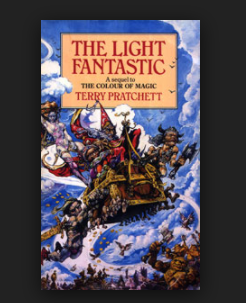
33. The Light Fantastic
I barely remember this book. The introduction of Cohen the Barbarian is a masterstroke and there is more plot in this book (save the world, defeat the bad guy) than The Colour of Magic, but I?m still not its biggest fan.
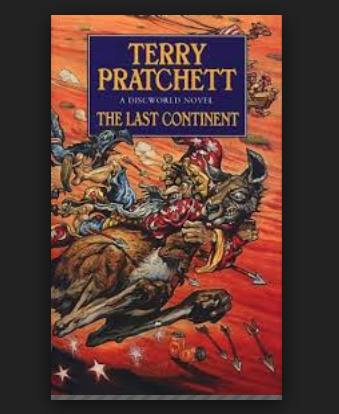
34. The Last Continent
A parody of Australia which now reads?very oddly. The degree to which Australia was seen as a hick-filled wasteland only 20 years ago is remarkable. In contrast, its also remarkable how culturally rich Australia is presented as; few Discworld books are as dense with parodies as The Last Continent. The story suffers from a weak Wizards story, the conclusion doesn?t really satisfy the paradoxes and questions it raises about time travel. There?s lots of funny moments, but it depends how funny you find jokes about Australia which are 20 years old.
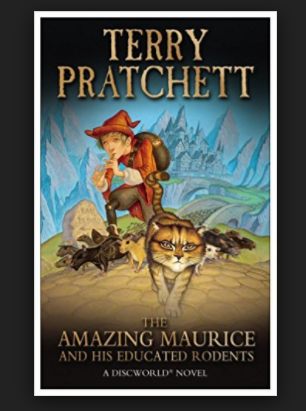
35. The Amazing Maurice and his Educated Rodents
I really enjoyed most of Maurice. The concept is good, the cat is funny, and the turmoil of a rat society of rats who learn how to speak is compelling. But the big bad guy, a psychic rat king is weird, even by Discworld standards. The book is entertaining generally, and the denouement is satisfying, but the climax rests on a weird conflict I couldn?t get behind.

36. I Shall Wear Midnight (Tiffany Aching)
The fourth Tiffany Aching book is my favourite since the first one. The plot is more interesting and the world is more expansive (bringing back Eske from Equal Rites is a lovely tough) and the villain, the Cunning Man, is vile. Tiffany grows up through this book as she grapples with love (other people?s) and the responsibilities of being a witch.

37. The Shepherd?s Crown (Tiffany Aching)
The bastard had to take her with him, didn?t he? The scenes which open the book are genuinely touching and deal with well-managed loss well. Ridcully?s loss is easy to understand. The development of Tiffany into a young woman in this book is also managed really well. The return and defeat of the Elves is a suitable way to finish the Discworld series, but as with all monsters, the more you see of them the less terrifying they are. In Lords and Ladies, their vindictiveness was chilling. In The Shepherd?s Crown its more cartoonish.
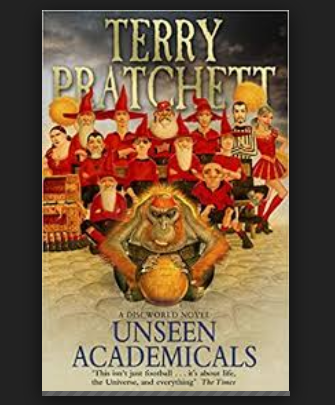
38. Unseen Academicals
Unseen Academicals is the weakest of the wizard books, which is a pity because it opens strongly (?The Megapode!?) with an utterly silly chase scene. But the combination of weak new characters, poor plotting and the fact I couldn?t care less about football means this isn?t for me. The treatment of the Orcs is extremely Pratchett, but like other later books, it lacks the subtly of his earlier books.
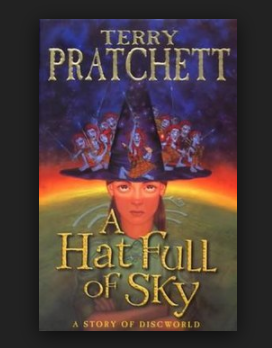
39. A Hat Full of Sky (Tiffany Aching)
Similar problems for me as above, plus the Hiver is just silly antagonist. The witch trials are fun though, as are the Nac Mac Feegle, who are another masterful creation of late era Pratchett that is too easy to overlook if you ignore his later work.
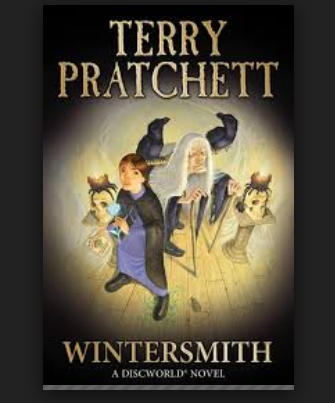
40. Wintersmith (Tiffany Aching)
The first Tiffany Aching book I really quite enjoyed, but the second one doesn?t work for me. These are young adult fiction and the tendency for young adult fiction books to have heroes and heroines who are slightly too powerful on account of being ?chosen? in some way annoys me too much. But these books aren?t for me, so I won?t put the boot in too much.
 Even the cover annoys me
Even the cover annoys me
41. Eric
Where to start. Slap bang in the middle of the Discworld?s golden era and it?s just not very entertaining. Unlike later parodies like a Midsummer Night?s Dream or the Phantom of the Opera Eric is formulaic. Faust is a classic story but it falls flat because there?s so little of the Pratchett flair added. Normally Rincewind books are packed full of compelling characters because all Rincewind does is run away?that is not the case in this book.
